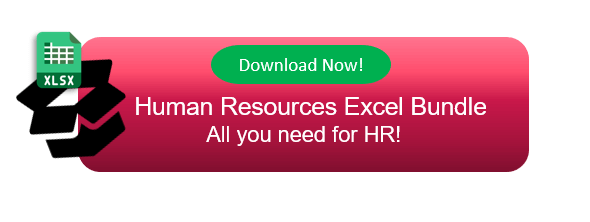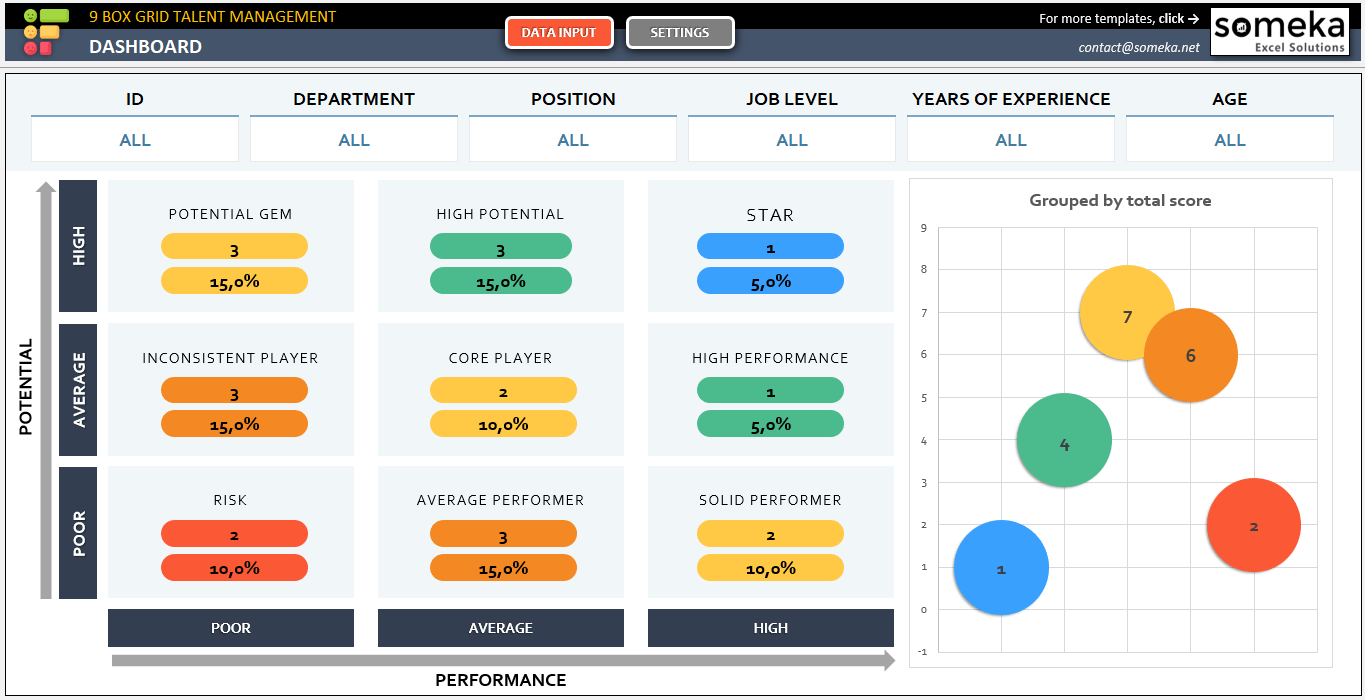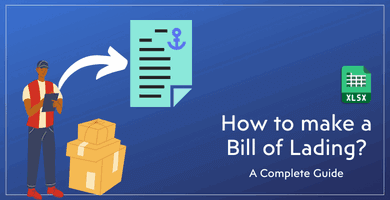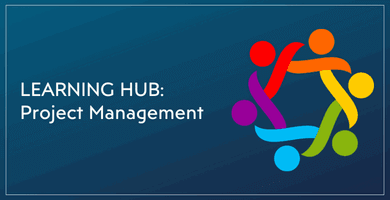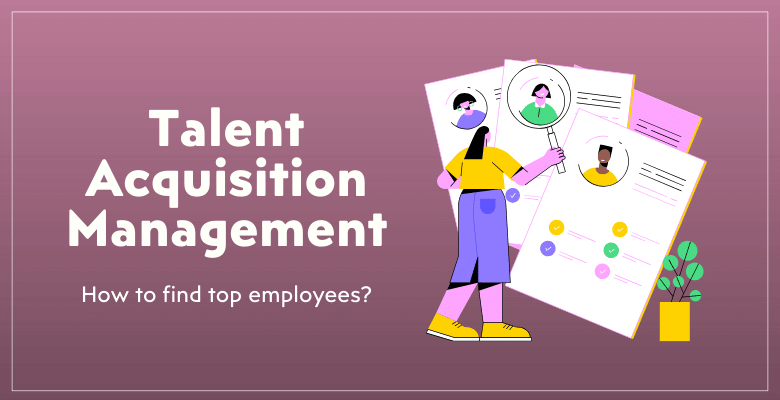
Talent Acquisition Management: Strategies for Modern Recruiters
In a world of fierce competition for top talent, having a strategic approach to talent acquisition is essential for any organization’s success. Talent acquisition management goes beyond simply filling open positions; it’s about identifying, attracting, and retaining the best candidates to meet your organization’s long-term goals. Are you ready to elevate your talent acquisition process and secure the brightest minds for your team? Let’s explore the strategies and techniques that modern recruiters are leveraging to stay ahead in the talent acquisition game.
Table Of Content
1. What’s Talent Acquisition?
2. Talent Acquisition vs. Recruitment
3. Talent Acquisition Management
4. Key Components of Talent Acquisition Management Strategy
5. Talent Acquisition Process
6. Collaborating with Hiring Managers and HR Teams
7. Leveraging Technology in Talent Acquisition Management
8. Overcoming Common Challenges in Talent Acquisition Management
9. Tips For Successful Acquisition Management
10. FAQ’s on Talent Acquisition Management
Key Takeaways
- Talent Acquisition Management is a planned way to hire people that focuses on their long-term growth and success.
- Key parts of effective Talent Acquisition Management strategies are employer image, candidate experience, a variety of sourcing methods, and technology.
- Aligning goals with business objectives, giving candidates good experiences, and using AI and automation technologies can help companies find and hire the best people.

1. What’s Talent Acquisition?
Finding, attracting, and hiring skilled people to meet an organization’s long-term goals and wants is what talent acquisition is all about. A good plan for hiring people includes:
- Professionals who are trained in finding and hiring talent who work together as talent acquisition teams to find and hire people
- People who can add a lot of value to the company should keep improving their skills and influence.
- Some of the most important parts of a good talent acquisition strategy are workplace branding, planning for future resources, making the work force more diverse, and building a full pipeline of candidates.
To do their jobs well, talent acquisition managers need to know a lot about things like marketing, hiring, project management, business planning, and making processes run more smoothly.
Talent acquisition is a big part of building a strong workforce. It involves finding and hiring qualified people who can meet the needs of the business now and show promise for future growth within the company. This proactive method to hiring makes sure that there are always qualified people available for future jobs.
 10. What Are 9 Box Alternatives?
10. What Are 9 Box Alternatives?
2. Talent Acquisition vs. Recruitment
While recruitment centers on filling immediate job vacancies, talent acquisition takes a more strategic approach that considers future business objectives and employee growth as part of the talent management process. Talent acquisition consultants, often part of talent management teams, develop and implement ongoing strategies to identify and recruit specialists, leaders, and future executives for an organization.

A talent acquisition specialist plays a key role in:
- Fostering effective communication between team members
- Enhancing employee engagement
- Contributing to a more successful and efficient recruitment process
This strategic methodology sets talent acquisition apart from traditional recruitment, as it focuses on the long-term development and success of both the organization and its employees.
3. Talent Acquisition Management
Talent acquisition management comprises the formulation and execution of strategies aimed at attracting, engaging, and recruiting exceptional talent, thereby maintaining a robust workforce for the organization. The primary objective of talent acquisition is to identify and acquire individuals who can meet the organization’s current and future requirements. Talent acquisition managers are charged with the task of finding and selecting suitable candidates, as well as those with the potential to develop within the company.
Talent acquisition professionals should possess a varied set of competencies, including:
-
- Marketing
- Recruitment
- Project management
- Business strategy
- Process optimization
Additionally, they should be adept at networking and presenting. Utilizing HR tech platforms such as ATS, screening and analytics tools enables talent acquisition professionals to refine recruitment processes and organize candidate data efficiently.
Effective channels for sourcing candidates include:
- Job boards
- Online sourcing platforms
- Employee referral programs
- Internal talent
- Company alumni
Cultivating positive relationships with candidates is essential, as it enables the development of a reliable source of qualified prospects for future roles.
4. Key Components of Talent Acquisition Management Strategy
To successfully build and maintain a thriving workforce, organizations need to focus on four key components of talent acquisition management strategy:
- Constructing a robust employer brand
- Advancing company culture
- Devising a competitive remuneration package
- Developing a positive candidate experience
The upcoming sections will detail these components and their relevance in the talent acquisition process.
4.1. Employer Branding
Employer branding is essential for drawing in talented applicants and encompasses the promotion of the organization’s culture, values, and advantages.
Companies can make a strong employer brand in the market by crafting and promoting their values, culture, and benefits. This helps the company stand out from rivals and affects how potential employees see the company.
You can avoid making common mistakes in company branding when hiring people by:
- Creating a complete employer branding plan that fits with the beliefs and goals of the business
- Making sure the company keeps its promises and gives its employees a good experience
- Getting reviews and comments on a regular basis to deal with any problems or issues that come up
Investing in an appealing workplace brand helps companies find and keep great employees, which raises their profile in the job market and boosts performance by hiring top performers.
4.2. Candidate Experience
Candidate experience is how a job candidate feels about the hiring process as a whole. This can affect the company’s image and its ability to get top talent. People who work in talent acquisition management, the hiring process, and the technology used are the three main factors that affect how candidates feel about the job. A positive company brand, clear and timely communication, and an easy onboarding process are all important for a candidate’s experience.
A positive candidate experience has several benefits for talent acquisition management, including:
- Attracting top talent
- Increasing the desire to work for the company
- Enhancing the employer brand
- Improving candidate engagement
- Building a talent pipeline
By focusing on providing a positive candidate experience, organizations can foster a strong employer brand and facilitate the recruitment of high-caliber candidates.
4.3. Diverse Sourcing Methods
Diverse sourcing methods employed in talent acquisition include:
- Recruiting in suitable locations
- Leveraging existing personnel
- Incorporating Employee Resource Groups (ERGs)
- Reexamining job descriptions
- Employing a broad range of sources
- Experimenting with distinct candidate engagement approaches
- Guaranteeing job-related messaging appeals to varied candidates
These approaches can help to broaden the talent pool and draw candidates from diverse backgrounds, promoting diversity and inclusion in the workforce.
Incorporating diversity in teams encourages innovation and creativity. Talent acquisition can facilitate an inclusive recruitment process for underrepresented candidates by creating inclusive job descriptions, establishing diverse candidate pipelines, and addressing bias in the hiring process. By leveraging a variety of sources and engagement methods, organizations can broaden their talent pools and ensure job-related messaging resonates with a wide range of candidates, ultimately leading to a more inclusive and diverse workforce.
5. Talent Acquisition Process
The talent acquisition process includes steps such as job posting, candidate sourcing, screening, interviewing, and onboarding. Job postings in the talent acquisition process involve formulating effective job descriptions that accurately reflect the responsibilities, qualifications, and expectations of the role in order to attract qualified candidates who meet the requirements of the position.
Let’s have a closer look at the Talent Acquisition steps!
![]()
5.1. Skills Gap Analysis
Firstly, you should define the gaps in your talent pool. So you can start with defining your organizational mission, vision and goals and then compare your existing pool with your future needs. This will bring you a skills gap analysis. You can use Gap Analysis Template as a study tool.
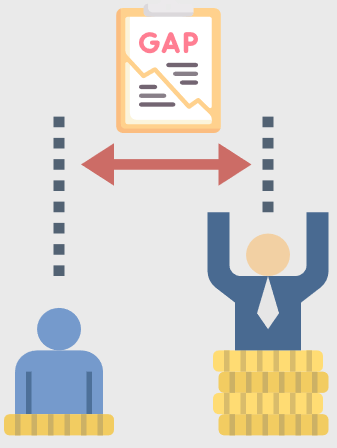
5.3. Defining the Position Details
Now it’s time to define the particular position details.
- Write your job description
- Write down all the needed skills, competencies, certificates, education and knowledge details
- Define the salary range
- Write down the expected responsibilities
These steps are very important as they builds the base of the coming steps.
5.4. Job Requisition
Prepare your job requisition. This should include your reason for hiring, position details, position responsibilities, the needed skills, urgency, expected budget, job type, etc.
Then you should get your job requisition approved before staring the searching process.
5.5. Determining Selection Criteria
According to your job description, now you should determine your selection criteria to ensure a bias-free hiring.
Here you can also choose your selection method, which might include skill tests, general mental ability tests, structured interviews, online process tests.
5.6. Searching
Here, you’ll decide on your sourcing channels and start your searching process. A well-structured job descriptions in your announcement will help you to attract the right people to your business. Also, using the right keywords on your description will help auto-filtering features of the job boards.
5.7. Selection
Now you have lots of job application forms and it’s time to select. Here’s a small list of how to select your candidates:
- Screening
- Interviews
- Tests
- Reference checks
- Assessments
- Video calls
5.8. Hiring
Now you have decided on your prospect, so it’s time to send your job offer and negotiate with the candidate.
5.9. Onboarding
You should have an structured onboarding plan for the new hires. This will both increase the engagement of the new employee and also limit the time and energy of your existing employees for the new comers.
Try to make a clear process for the new employees. This may include the followings:
- Which documents to read?
- Which tools to download?
- Which tests to be done?
- Which employees to get orientation?
- General values and rules on the company
5.10. Evaluation
You’re not done after the hiring of your new employees. You should also evaluate their potential and performance levels. You can use common tools like 9 Box Grid model to see your talent pool’s progress.
– This is the Dashboard of 9 Box Grid Talent Management Excel Template created by Someka –
The most effective practices for sourcing candidates in talent acquisition include:
- Being precise and organized in candidate searches
- Maintaining a robust candidate sourcing pipeline
- Attempting numerous approaches to locate candidates
- Leveraging social media platforms
- Utilizing job boards
- Instituting employee referral programs
- Engaging in inbound recruiting
By employing these practices, organizations can effectively manage a large volume of applications and ensure a more efficient and successful recruitment process. You should also track all your hiring process in a structured way.
– This is the Dashboard section of Someka’s Recruitment Tracker Excel Template –
Following candidate selection, the concluding step in the talent acquisition process is onboarding, which entails orienting the new hire to the organization, introducing them to their team, and furnishing them with the requisite resources to be successful in their role. A seamless onboarding process is essential to ensure that new hires feel welcomed, supported, and prepared for their new role, ultimately contributing to their long-term success within the organization.
6. Collaborating with Hiring Managers and HR Teams
Collaboration between hiring managers and HR teams is essential for the success of talent acquisition management. By aligning goals and expectations, sharing resources and best practices, and leveraging technology and data analytics, both parties can work together to streamline the hiring process, improve candidate selection, and ultimately contribute to the organization’s overall success.

6.1. Aligning Goals and Expectations
Aligning goals and expectations between hiring managers and HR teams ensures a smooth hiring process and better candidate selection. To ensure alignment in talent acquisition, hiring managers and HR teams should:
- Engage in regular check-ins
- Align recruitment strategies with business goals
- Connect the company vision with recruiting strategies
- Track and analyze the effectiveness of talent acquisition efforts
- Collaborate on job descriptions and headcount needs
- Misalignment of goals and expectations can lead to:
- Delayed hiring
- Poor candidate fit
- Decreased employee engagement
- Increased turnover rates
By working together and maintaining open communication, hiring managers and HR teams can overcome these challenges and ensure a more successful and efficient talent acquisition process.
6.2. Sharing Resources and Best Practices
Sharing resources and best practices between departments can improve the overall efficiency of the talent acquisition process. To ensure effective resource sharing between HR and hiring managers for talent acquisition, it is recommended to:
- Establish a feedback loop
- Go in prepared with relevant information and insights
- Prioritize using data and analytics
- Foster effective communication
- Develop a strong employer brand
Effective resource sharing requires collaboration, communication, and a shared understanding of talent acquisition goals. By working together and leveraging each other’s expertise, hiring managers and HR teams can optimize the talent acquisition process and ensure the best possible outcomes for both the organization and its employees.

7. Leveraging Technology in Talent Acquisition Management
The use of technology in talent acquisition management is pivotal for refining and enhancing the recruitment process. By employing tools such as Applicant Tracking Systems (ATS), social media platforms, and artificial intelligence and automation, organizations can enhance their talent acquisition efforts, improve the candidate experience, and ultimately contribute to a more successful and efficient recruitment process.
7.1. Applicant Tracking Systems (ATS)
Applicant Tracking Systems (ATS) make the hiring process easier by automating many chores. This saves recruiters time. They help companies organize job applications, look over resumes, and keep track of how candidates move through the hiring process. The best way for recruiters to handle a lot of applications without getting overwhelmed is to organize and manage candidate data well.
ATS can also improve employer branding and the general results of the hiring process, which can help you get better employees. By using an ATS, companies can make sure that their talent acquisition process is more effective and quick. This will help them hire high-performing people who will help the company succeed in the long run.
Leveraging technology in talent acquisition management is crucial, as HR tech platforms can greatly aid the integration not only in recruiting but also for improving compliance procedures. Today’s professionals frequently rely on robust compliance tools that ensure adherence to regulations and standards efficiently. By utilizing compliance technology, equipped with features such as streamlined processes and centralized record-keeping, organizations can minimize risk and enhance coordination among teams, ensuring best practices are followed.
7.2. Social Media Recruiting
Social media recruiting is the utilization of social media platforms to identify and interact with prospective candidates for job openings. Platforms such as LinkedIn, Facebook, and Instagram can be used to post job openings and search for candidates through keyword searches. Social media recruiting aids organizations in widening their candidate pool and engaging with potential hires.

By leveraging social media platforms for recruiting, organizations can:
- Create equitable recruiting grounds
- Enhance brand value
- Broaden the talent pool
- Reach a larger pool of potential candidates
- Facilitate more accurate targeting and engagement with passive candidates
- Lead to a more diverse and inclusive workforce
7.3. Artificial Intelligence and Automation
Artificial intelligence (AI) and automation enhance the efficiency of the talent acquisition process by:
- Automating monotonous tasks
- Offering insights derived from data
- Creating more precise job postings
- Effectively screening applicants
- Streamlining recruitment processes
- Reducing bias in hiring and fostering diversity by removing homogeneity in the recruitment process
In the talent acquisition process, several repetitive tasks can be automated, such as:
- Job advertising
- Resume screening
- Interview scheduling
- Candidate communication
- Background checks
- Onboarding
- Data entry
By leveraging AI and automation, organizations can optimize the recruitment process, eliminate tedious tasks, and focus on more strategic activities that contribute to the overall success of the talent acquisition process.
8. Overcoming Common Challenges in Talent Acquisition Management
Challenges commonly faced in talent acquisition management include:
- Communication gaps between recruiters and hiring managers
- Overburdened and understaffed HR departments
- Hiring managers confronted with compensation constraints
By focusing on the key components of talent acquisition management, organizations can overcome these challenges and ensure a more successful and efficient recruitment process.

8.1. Competing for Top Talent
Companies that want to hire the best people need to offer competitive pay, benefits, and a strong company brand. Companies can get and keep good employees by offering competitive pay, a good work-life balance, chances to advance in their careers, a wide range of benefits, a happy work environment, and good communication and feedback.
To get the best employees, companies can improve their job brand by:
- Making use of present employees
- Taking care when writing job descriptions
- Taking a social media-friendly stance
- Making the brand your own
- Putting money into chances for employees to grow
In the competitive job market, companies can stand out and get the best people to join their teams by focusing on employer branding and giving competitive pay packages.
8.2. Reducing Time-to-Hire
To reduce your time-to-hire, we can recommend the following steps:
- Streamline the recruitment process
- Leverage technology
- Improve collaboration between hiring managers and HR teams
- Strategize the hiring process
- Improve job descriptions
- Simplify the application process
- Optimize sourcing channels
- Leverage data to hasten the hiring process
- Streamline initial funnel stages
- Automate recruiting tasks
- Form a talent pool
- Initiate employee referral programs
- Consistently source for candidates
- Utilize tools to automate the hiring process
By implementing these strategies, organizations can reduce time-to-hire in talent acquisition management.
Examples of companies that have achieved a reduction in time-to-hire in talent acquisition management include Hilton, which introduced video interviews to reduce their time to hire from 42 days to just five. By adopting similar strategies and leveraging technology, organizations can optimize their talent acquisition process and fill open positions more efficiently.
8.3. Mitigating Bias in the Hiring Process
Some things that can be done to reduce bias in the hiring process are:
Blind hiring: Taking out personal information like names, ages, genders, and ethnicities from jobs and applications that might lead to bias.
Diverse candidate pipelines: Actively looking for and hiring people from underrepresented groups to make sure the number of applicants is diverse.
Structured interviews: These use a standard set of questions and evaluation factors to make sure the interview process is fair and consistent.
So, these methods can help companies hire people without being biased and in a more objective way.
Organizations can make sure the hiring process is more objective and fair by attracting a wide range of candidates and using organized interviews. This could make the workforce more diverse and open to everyone.
Also, companies can make the workplace more fair and welcoming by handling and reducing bias in the hiring process. This will not only help them hire better people, but it will also make the workplace more diverse and equal.
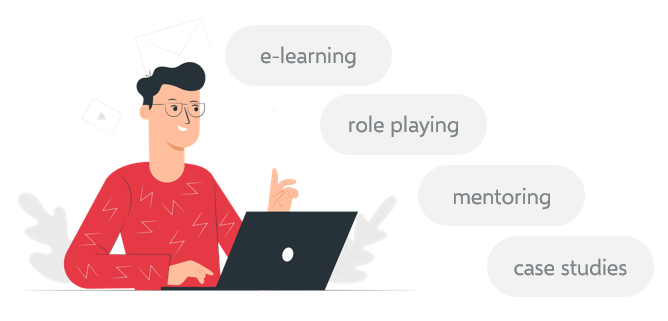
9. Tips For Successful Acquisition Management
For successful talent acquisition management, organizations should concentrate on the following:
- Establish a powerful employer brand
- Ensure a positive candidate experience
- Employ varied sourcing methods
- Make use of data analytics
By prioritizing the company’s values, culture, and benefits, organizations can create a strong employer brand that attracts top talent and differentiates them from competitors.
Providing a positive candidate experience has several benefits:
- Attracts top talent
- Increases the desire to work for the company
- Enhances the employer brand
- Builds a talent pipeline
In addition, using diverse sourcing methods and leveraging technology can help organizations reach a wider pool of candidates, promoting diversity and inclusion in the workforce.
By aligning talent acquisition strategies with business goals, implementing ongoing communication with hiring managers and HR teams, and utilizing technology to streamline the recruitment process, organizations can optimize their talent acquisition efforts and secure the brightest minds for their teams. With these tips in mind, organizations can build a thriving workforce and contribute to their long-term success.
10. FAQ’s on Talent Acquisition Management
What is talent acquisition and management?
Finding and hiring good candidates is part of talent acquisition. Onboarding, performance management, and career growth are all parts of talent management, which makes sure that these candidates become great team members who stay with the company.
Is HR and talent acquisition the same?
No, HR and talent acquisition are not the same. HR focuses on managing and supporting the company’s existing workforce, while talent acquisition is primarily about finding and hiring the best people to fill new roles.
What are the 7 components of talent management?
Talent management comprises of seven essential components, such as recruiting, assessing, developing, compensating, training, rewarding, and performance monitoring.
How can a strong employer brand benefit an organization in talent acquisition management?
A strong employer brand can help companies find and keep the best employees, make them more visible in the talent market, and improve performance by hiring high-performing people. This is good for talent acquisition management in the long run.
How can technology, such as applicant tracking systems (ATS), help streamline the talent acquisition process?
Technology such as applicant tracking systems (ATS) can help streamline the talent acquisition process by automating various tasks, organizing and managing applicant data, and reducing the time and resources needed to fill a role.
Recommended Readings:
Talent Management: Definition, Strategy, Process
Succession Planning: Complete Guide With Examples and Case Studies
